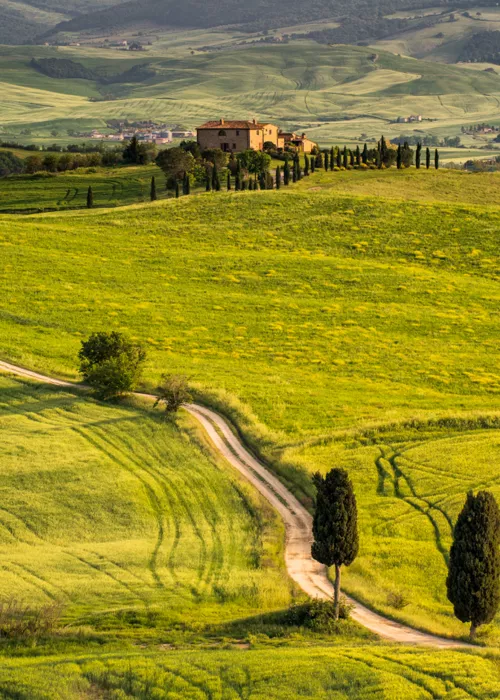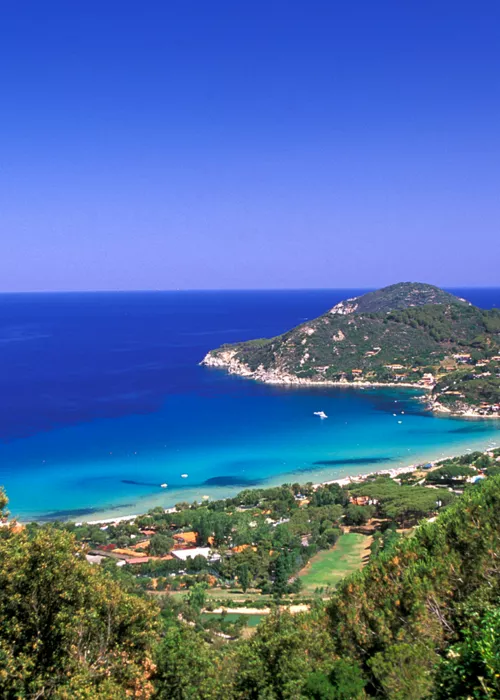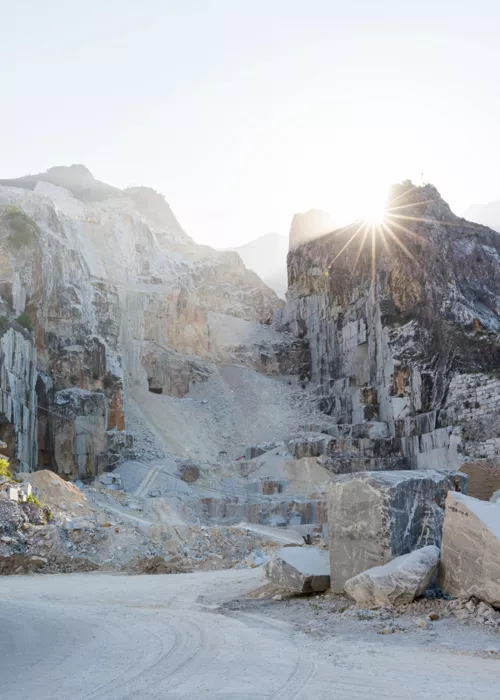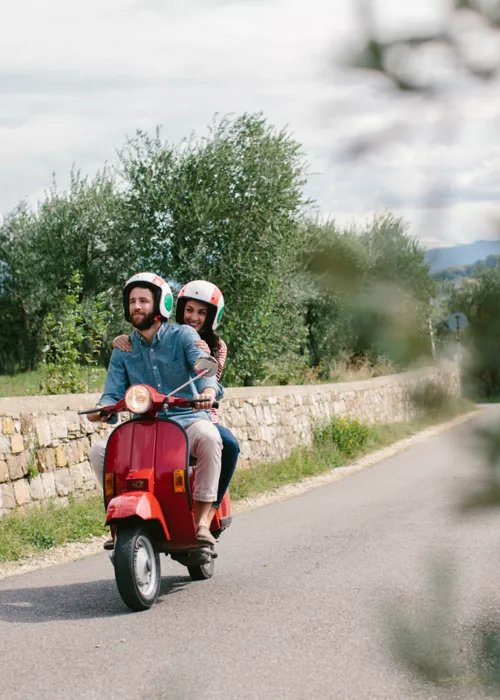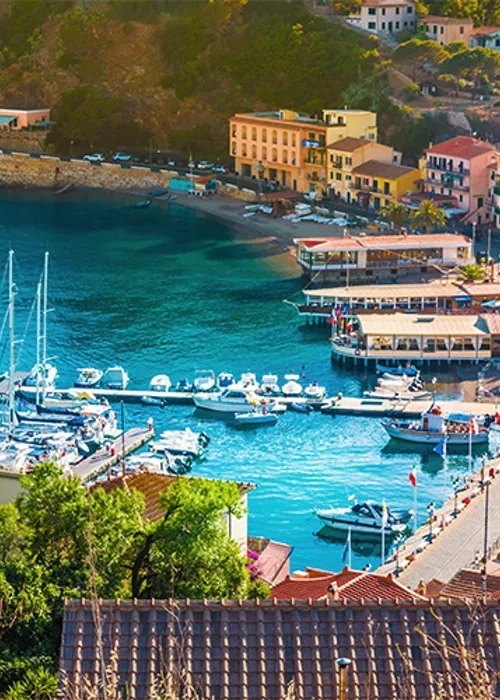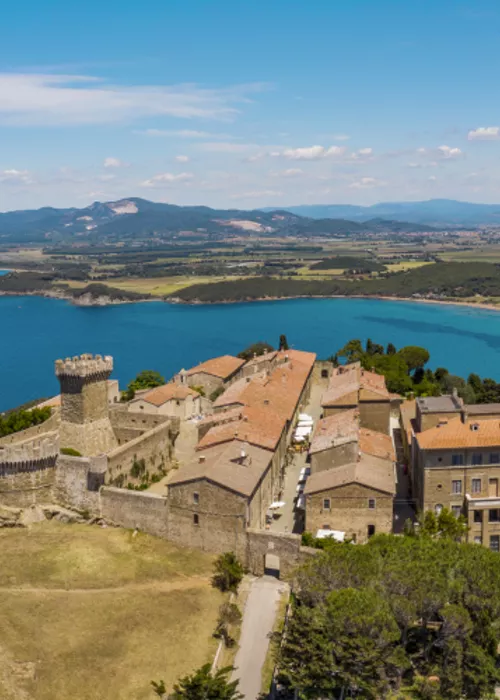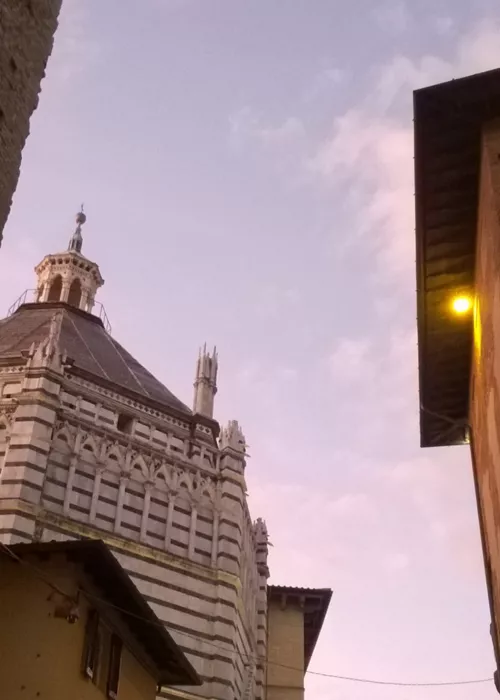From Cala Galera Marina towards the circular itinerary

Sailing along the Etruscan Route we dock at Cala Galera, the gateway to the Tuscan Maremma, a modern private marina able to offer complete nautical assistance and equipped to accommodate 670 pleasure craft from 6 to 50 metres in length. From here it is possible to explore the lagoon of Orbetello and end the day with a suggestive and unique sunset over the Etruscan Sea. On the inner breakwater there is a lively commercial area of 300 metres, with 50 different commercial activities such as ATMs, shops, bars, ice-cream parlours, restaurants, pizzerias, technical assistance shops, agencies and a supermarket. Travel agencies will help you organise unforgettable excursions into the hinterland, and for those who love two wheels, there are plenty of opportunities to hire bicycles and explore the surrounding area. Leaving the port, there is a cycle path along the Strada Provinciale Porto Ercole which, if followed north for a few kilometres, will take you to the circular route which will allow you to visit the beautiful lagoon of Orbetello.
The village of Orbetello

The ring that surrounds the lagoon is a cycle path, largely separated from traffic. Getting on your gravel or mountain bike, you can set off to discover the lagoon of Orbetello. If you take the cycle path towards Orbetello, taking care to avoid any traffic, the waters of the lagoon open up a few metres away and accompany you until you cross the artificial dam that connects the Argentario to the Orbetello peninsula. Built in 1841 by Leopold II of Lorraine, the dam divides the lagoon into two bodies of water, the Levante and the Ponente, which until 1944 were crossed by the railway that connected Orbetello Scalo to Porto Santo Stefano. Pedalling between the two bodies of water, we can admire the old Sienese windmill, one of the most symbolic buildings of the lagoon city, and continue to the large square overlooked by the Cathedral of Santa Maria Assunta. Here we stop to walk through the narrow streets of Orbetello's historic centre.
The ancient city of Cosa

Ride back along Via Aurelia Antica and then turn right into Via di Cameretta, a small road lined with characteristic dry-stone walls that winds between the railway line and the Laguna di Levante. The traffic is already a memory, but at km 3,4 the situation improves even further: the road becomes a service road, closed to traffic except for bicycles. For about 2km we cycle along the shores of the lagoon, accompanied by herons and low vegetation. As soon as you leave the Cameretta cycle path, you will see the Ansedonia hill in front of you. The road climbs along Via delle Mimose and Via delle Ginestre, with a gradient of almost 15%. Once you reach the walls of the Roman town of Cosa, the effort will give way to wonder. Do not miss the National Archaeological Museum and the panoramic view of the coast from the highest point of the archaeological area: the Via Sacra dell'Acropoli. After the visit to Cosa, we begin the descent towards the sea until we reach the Tagliata Etrusca, a magnificent work of Roman hydraulic engineering.
The village of Capalbio

The itinerary continues to cross the SS Aurelia and then, after a short stretch of dirt road, it turns south towards Capalbio along the SP Pedemontana. At km 17,35, turn left onto the Strada dell'Oliveto, a 2,5km stretch of compact dirt road that winds through the Maremma countryside. The road then becomes sealed: the views and countryside continue along the Strada dei Poggetti as far as Torre a Palazzi, before giving way to the large wooded area of Monte Verro and, after 2km, the SP di Capalbio. It is time to stop for a well-deserved break: enjoy the view from the perimeter wall and then taste a typical Maremma dish in one of the restaurants along the picturesque alleys in the shadow of the imposing Rocca Aldobrandesca, the highest point in the village.
Duna Feniglia Nature Reserve

After a relaxing night in the picturesque town of Capalbio, we leave it behind and head towards Pescia Fiorentina. After about 5 km turn right towards Capalbio Scalo. Here, in the Garavicchio area, a unique experience awaits us: the Tarot Garden, a visionary creation of the artist Niki de Saint Phalle, with large and colourful sculptures that stand out in the green of the scrub as if in a daydream. In Chiarone Scalo, from the railway underpass, take the SP Litoranea. We cycle along the sea and the Burano lake (WWF oasis), where the sixteenth-century Buranaccio tower stands. Soon we are back in front of the Ansedonia Hill, but this time, following the GPS track, we go around it, taking instead the beaten path with a natural surface that runs alongside the railway. The path ends at the entrance to the Cameretta cycling track, the track turns left, crosses the bridge over the Tagliata di Ansedonia - the canal that supplies oxygen to the Orbetello lagoon - and enters the Feniglia Forest Reserve, a protected area in the shade of maritime pines where deer, wild boars, foxes, badgers, white and grey herons live. Here we find the marble stele erected in memory of Caravaggio. The dune is crossed by 2 paths. The first preserves the natural soil and is only partly cycleable. The second path is the one we are going to take, from which the side roads that lead to the beach overlooking the open sea branch off. At the third kilometre, we can take the marked path to admire the splendid scenery that nature offers us.








